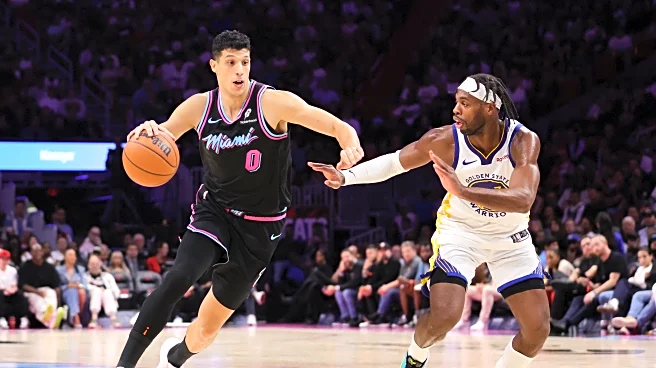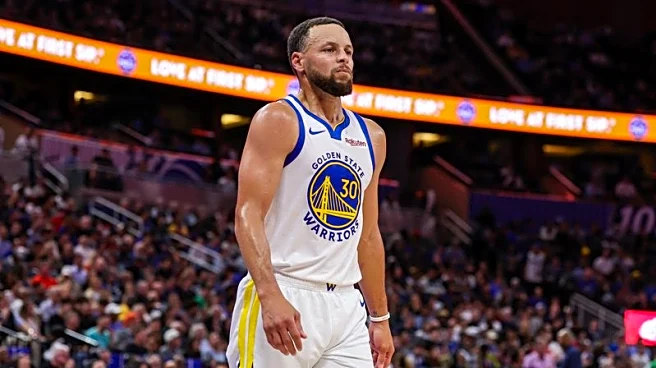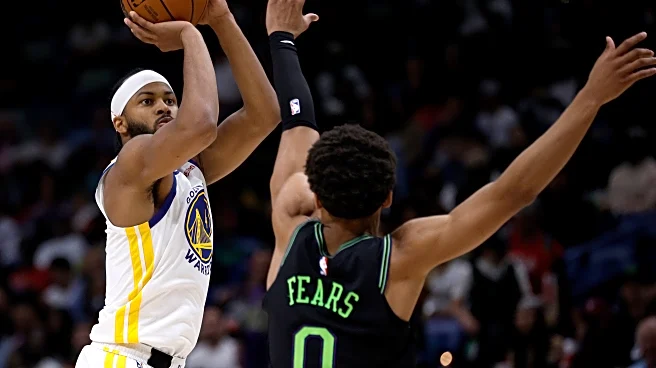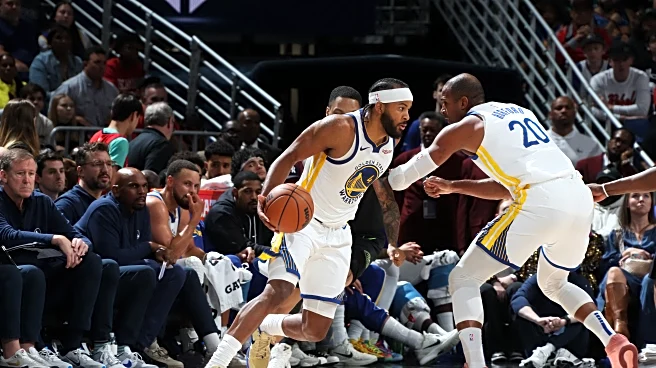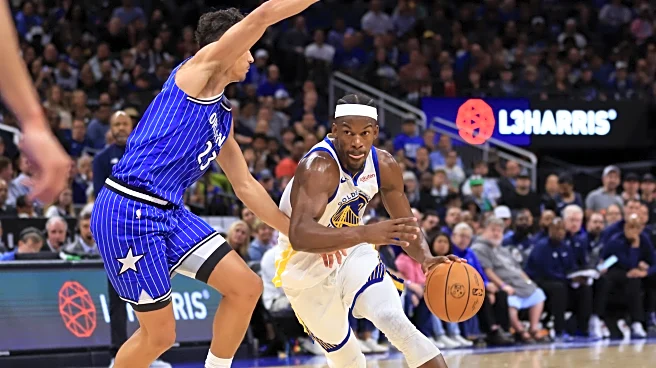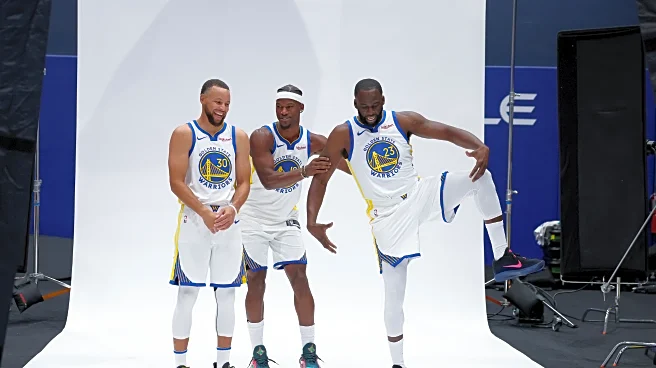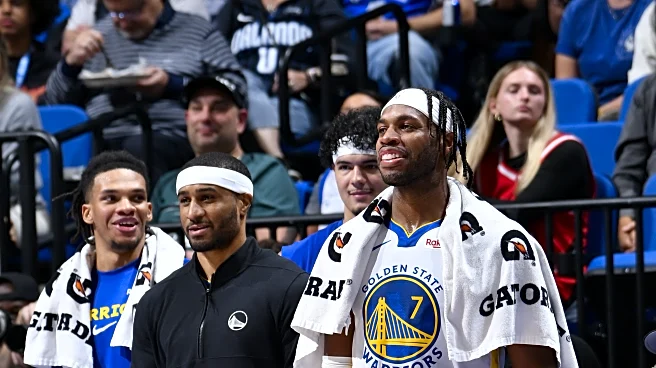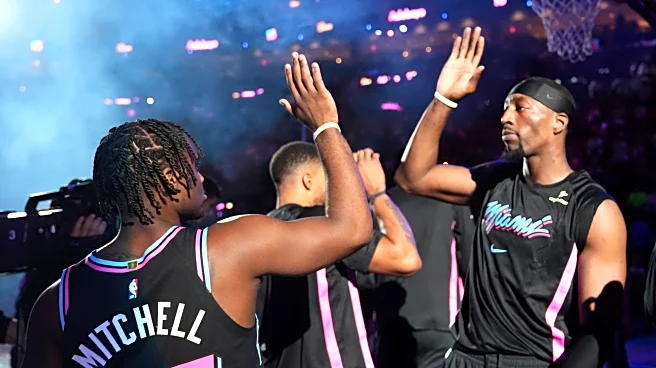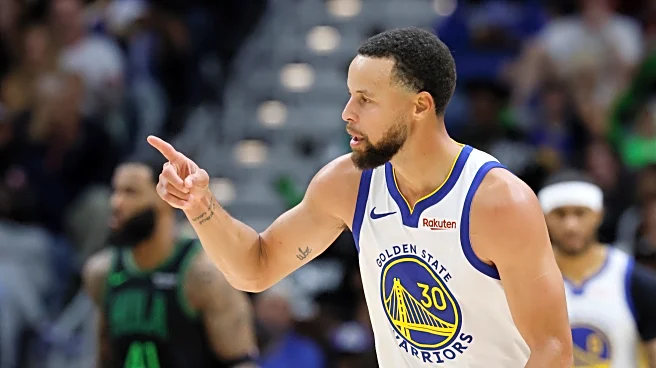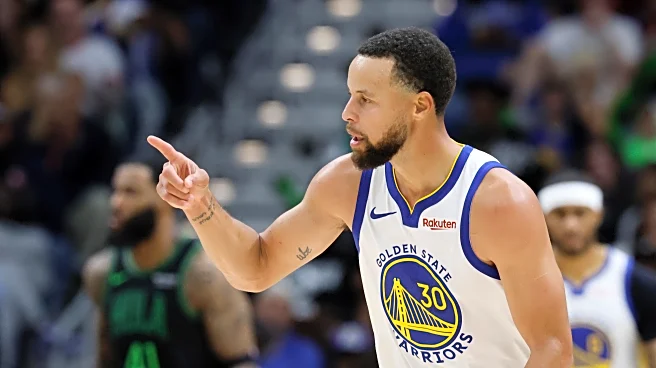If you missed this article
written by yours truly about the Golden State Warriors’ “tandem” 2-3 zone — the brand of zone defense they’ve exclusively used this season dating back from late last season — I feel it necessary to provide a quick overview of what exactly entails a tandem 2-3 zone and what differentiates it from a run-of-the-mill 2-3 zone as well as a 1-3-1 zone, which looks highly similar.
- In a 1-3-1, the five-man is at the “nail” or free-throw area, in the middle of the 3-man alignment. If the ball is swung to the corner, the five man sinks toward the low post in order to act as backup behind the baseline defender, whose role is to slide along the baseline and cover any pass to either corner.
- In a tandem 2-3, a guard occupies the nail, with the five being the baseline/backline defender. The wing defenders are tasked with stunting at any pass toward the wing in order to allow one of the top two defenders to recover.
Furthermore, another thing that differentiates a tandem 2-3 zone from a 1-3-1 zone is its “goal” —
that is, what it aims to accomplish.
(A tandem 2-3 zone) is a rather conservative zone that aims to take away three-point looks; (a 1-3-1 zone) is an aggressive half-court zone that employs doubles and traps, while actively trying to intercept passes by crowding the passing lanes.
Take note of the “lifted” positioning of the wings in a tandem 2-3 (a formation that aims to take away threes) as well as the “stacked guard” formation up top, which can fluidly morph into the more traditional two-guard formation of a vanilla 2-3 zone:
While the Warriors’ core group — in addition to Al Horford — weren’t available for the matchup against the Miami Heat, it was a clash that provided an intriguing mini-battle with regard to the tandem 2-3 zone, in the sense that the Warriors and the Heat are two of the teams in the league who exclusively make use of it. The Heat, especially, are high-volume zone deployers. Per Synergy tracking, the Heat’s 122 total possessions of zone rank third-most in the league.
Just below them in fourth place? The Warriors, who have tallied 91 possessions of zone this season.
Another commonality between each team’s zone defense is that both of them have been highly effective at stifling opponents. Among 10 teams that have tallied a minimum 50 zone possessions, the Warriors allow just 0.824 points per zone possession, while the Heat are just below them at 0.861 points per zone possession. Respectively, they are the stingiest and second-stingiest zone defenses in the league (min. 50 possessions).
(Conversely, in terms of seeing zone defenses as the offense, the two couldn’t be more far apart. The Warriors have faced a total of 23 zone possessions, the fourth-fewest mark in the league, per Synergy tracking. The Heat, on the other hand, have faced a total of 92 zone possessions, third most in the league.)
For the Warriors, it was a matter of when rather than if in terms of breaking out their tandem 2-3 zone, especially against a Heat team that plays a fast-paced brand of offense built on copious dribble penetration — an occurrence that a zone intends to limit and stifle (with the added intention of limiting and stifling three-point shots).

The Warriors tallied a total of 10 zone possessions against the Heat and allowed eight points — 0.800 points per possession. Take note of how they were able to largely cover every base with their zone: stunts by the lifted wings to help the top recover and close space, while the five-man anchoring the backline patrols the corners while simultaneously being able to keep himself underneath the rim due to the effectiveness with which the front two and middle two are able to limit dribble penetration:

A properly executed morphing zone such as this would limit any effort by the offense to create advantages through drives and kick-outs toward the perimeter:

Arguably, the lifted wings have the most important role in this zone configuration. Not only do they have to stunt at the wings to help the front two — they also have to help the backline five-man in terms of covering any passes to the corners, which defenses may intentionally target as it can be considered a weak point of a tandem 2-3.

Which, in that regard, the Warriors intentionally targeted the corners as soon as the Heat whipped out their own version of the tandem 2-3 zone. Watch as the Warriors patiently distort the Heat’s zone enough for Buddy Hield to have a wide-open look, courtesy of a kick-out pass toward the wing after Pat Spencer’s drive draws the weak-side wing defender (Jaime Jaquez Jr.) away from Hield (virtually creating a 2-on-1 on the weak side with Gui Santos at the dunker spot and Hield on the wing):

It’s important to note, however, the timing of when Erik Spoelstra decided to break out their tandem 2-3 zone: during the fourth quarter, as an answer to a stretch in which the young Warriors squad not only were keeping up with the Heat, but were threatening to take over the game completely. As opposed to Steve Kerr using the tandem zone to put a wrench into the Heat’s dribble penetration during the early and middle portion of the game — perhaps, as an attempt to remedy the lack of consistent offensive production in the half court — Spoelstra unleashed the tandem zone to expose two things:
- The Warriors’ shortage of bona-fide advantage creators and playmakers.
- The lack of practice time the Warriors have had on this road trip, let alone practice time involving zone offense.
To be fair to these Warriors, point two above was addressed simply through trial and error. While there certainly were possessions where they looked puzzled and at a loss in terms of trying to score against the Heat’s tandem 2-3, such as on this possession:

There were good-process-missed-shot moments, as well. Watch as an attempt is made to generate a corner three on the strong-side corner by simply putting pressure on the left wing defender of the zone (Jaquez). After an escape dribble, Brandin Podziemski has an open shot that misses:

Creating another 2-on-1 on the weak side by intentionally overloading the strong side while intentionally creating a mini-bout of confusion among the Heat defenders through cuts and relocations:

And performing a simultaneous two-man maneuver: flashing Quinten Post to the free-throw line while Hield sprints to the right corner, creating another 2-on-1 advantage on the right side:

The Heat ran fewer zone possessions during the game: a total of 8. The Warriors scored a total of 11 points against those possessions: 1.375 points per possession. In terms of raw scoring, the Warriors won the mini-battle of zones, and it is a valuable lesson and important reps (most certainly recorded and stored away as film for future teaching sessions) to take away by these young Dubs. However, it failed to budge the Warriors toward a bigger-picture win.
As usual, turnovers did the Warriors in. They turned the ball over on nearly 22% of their offensive possessions — ranking in the fifth percentile among teams in the league in terms of turnover rate, per Cleaning The Glass, and nudging them further toward the bottom half of the league in terms of turnover rate for the season (17.1% — dead last in the league in non-garbage time). The Heat, in turn, transformed the Warriors’ 21 turnovers into a whopping 34 points off of turnovers. The game of zones may have been a mini-battle these young Warriors can consider a silver-lining victory, but it’s another notch on the loss column that has this team — beleaguered by a schedule that has had no mercy — scrambling for their comfort zone that is home court.
